Structure of the (computer) memory

Bit (Binary digit) = elementary memory device (switch)
Byte = 8 bits
Structure of memory - example
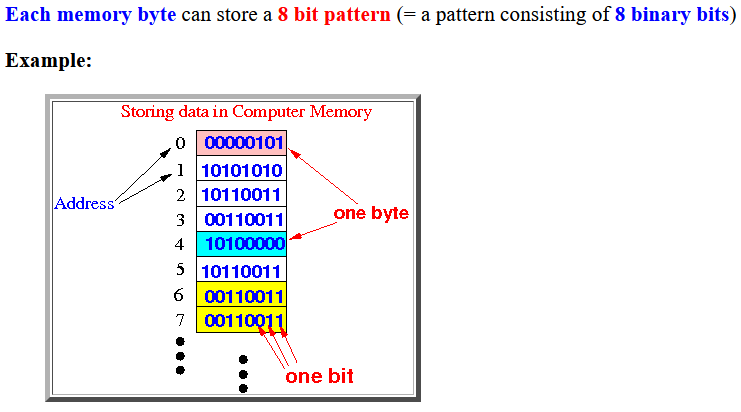
Different binary numbers that can be stored in 1 byte of memory
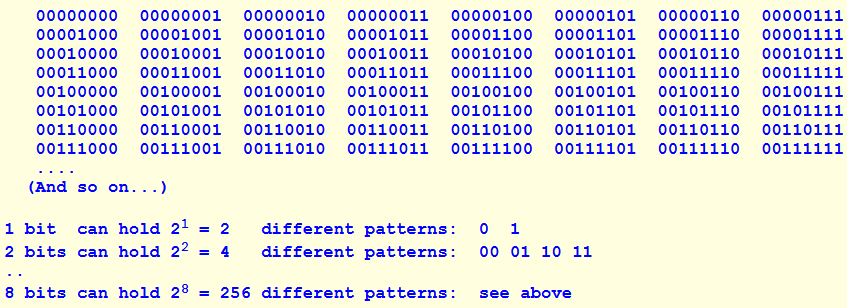

Different binary numbers that can be stored in 1 byte of memory


Solution:

Combining 2 adjacent memory bytes (cells)
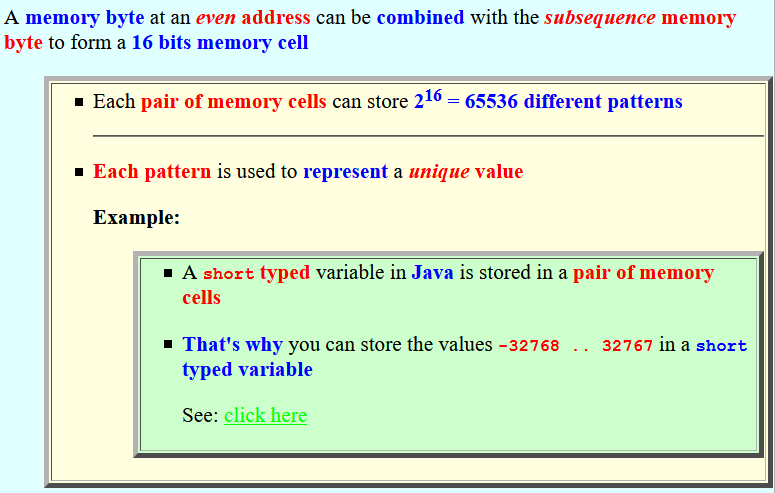
Example:
cells 0, 1 can be combined into a
16 bit memory cell with
address 0
Example:
cells 8, 9 can be combined into a
16 bit memory cell with
address 8
Example:
cells 7, 8
cannot be combined !!
Combining 2 adjacent memory bytes (cells) -
Example
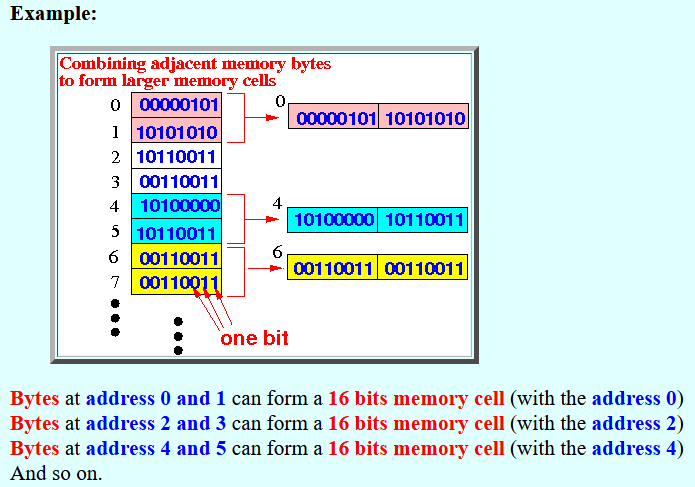
The computer instruction will specify the number of bytes to that it wants to access
Combining 2 adjacent memory bytes (cells) -
an analogy
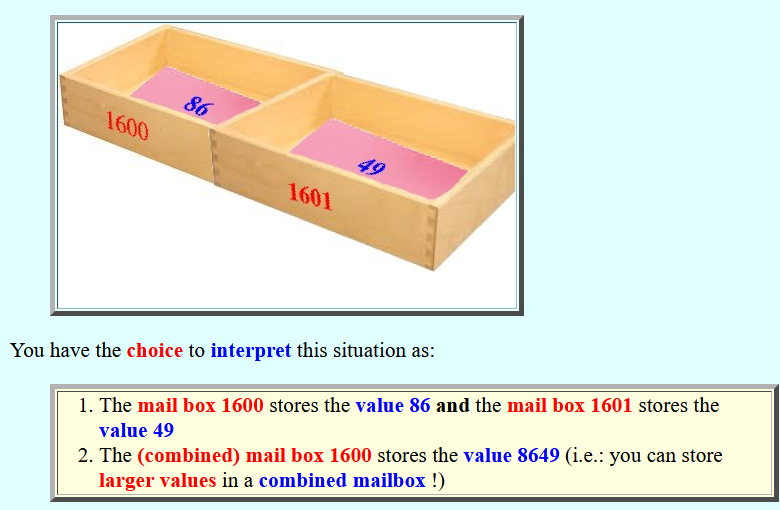
Combining 4 adjacent memory bytes (cells)

Combining 4 adjacent memory bytes (cells)
- Example
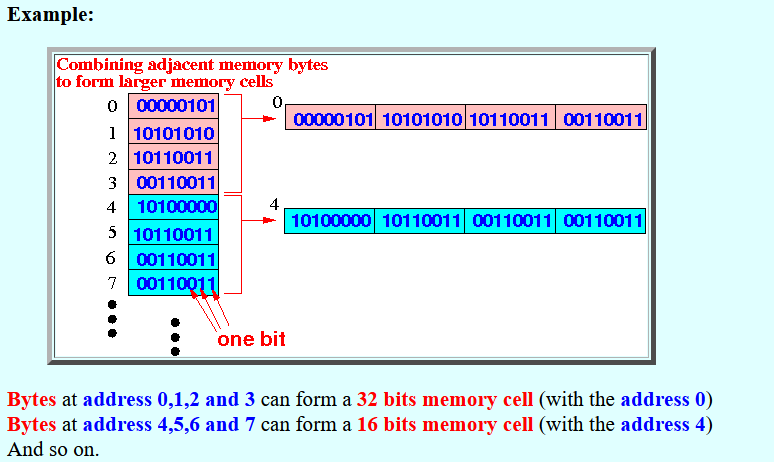
Postscript
|